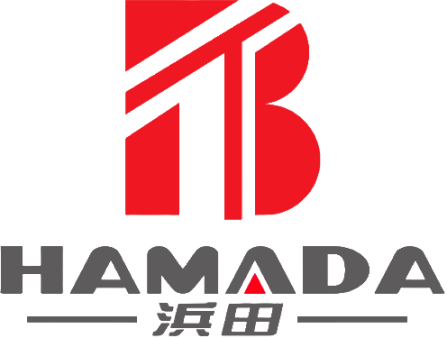What is harmonic drive in robotics?
What is harmonic drive in robotics
harmonic drive
With the continuous advancement of robotics technology, harmonic drive has become one of the key technologies for achieving precision motion control. With its high precision, high reduction ratio and high torque capacity, harmonic drive provides robots with excellent performance and reliability. So, what is the specific role of harmonic drive in robots?
Basic principle of harmonic drive
Harmonic drive, also known as harmonic reducer, is a high-precision mechanical device based on the principle of flexible gear transmission. Its core components include wave generator, flexible wheel and rigid wheel. The wave generator generates deformation waves through rotation, drives the flexible wheel to mesh with the rigid wheel to achieve deceleration and torque transmission. Since the number of teeth of the flexible wheel is less than that of the rigid wheel, the flexible wheel will retreat a few teeth relative to the rigid wheel for each rotation, thereby achieving a high reduction ratio.
Advantages of high precision and high reduction ratio
In robotics, precision and stability are crucial. Harmonic drives greatly reduce transmission errors and backlash through multi-tooth meshing, achieving high-precision control. Common harmonic drives can provide a reduction ratio of 100:1 or even higher, while maintaining a transmission efficiency of up to 90%. This enables the robot to maintain stable performance in complex and precise operations.
Application in industrial robots
Industrial robots are one of the main application areas of harmonic drive technology. In robot arms, harmonic drives are used to drive various joints to achieve precise position control and flexible movement. This high-precision motion control enables robots to complete complex tasks such as welding, assembly, and spraying, improving the efficiency of production lines and product quality.
Application in service robots
With the popularity of service robots in the fields of medical, home, and public services, the application of harmonic drives is becoming more and more extensive. In medical robots, harmonic drives are used to drive surgical instruments to help doctors perform minimally invasive surgery and provide high-precision and stable operation support. In home robots, harmonic drives ensure the stability of robot movement and operation and improve user experience.
Promote the development of intelligent manufacturing
Intelligent manufacturing is an important direction for future industrial development, and harmonic drive technology plays an important role in it. Through high-precision motion control, harmonic drives help manufacturing systems achieve automation and intelligence. Whether in precision assembly, quality inspection, or logistics handling, harmonic drives can provide reliable technical support to improve production efficiency and product quality.
In the future, the continuous innovation of harmonic drive technology will promote the development of robotics. In the future, with the advancement of material science and manufacturing technology, harmonic drives will become more compact, lightweight and efficient. At the same time, the development of intelligent control and networking will further enhance the performance of harmonic drive systems and achieve more complex and precise tasks.
In robotics, harmonic drive has become an important force in promoting the progress of the industry with its unique advantages and broad application prospects. With the continuous advancement of technology and the deepening of application, harmonic drive will continue to lead the development of robotics and create a more intelligent and efficient future.
 English
English Español
Español Português
Português русский
русский français
français 日本語
日本語 Deutsch
Deutsch Tiếng Việt
Tiếng Việt Italiano
Italiano Nederlands
Nederlands ไทย
ไทย Polski
Polski 한국어
한국어 Svenska
Svenska magyar
magyar Malay
Malay বাংলা
বাংলা Dansk
Dansk Suomi
Suomi हिन्दी
हिन्दी Pilipino
Pilipino Türk
Türk Gaeilge
Gaeilge عربى
عربى Indonesia
Indonesia norsk
norsk اردو
اردو čeština
čeština Ελληνικά
Ελληνικά Українська
Українська Javanese
Javanese فارسی
فارسی தமிழ்
தமிழ் తెలుగు
తెలుగు नेपाली
नेपाली Burmese
Burmese български
български ລາວ
ລາວ Latine
Latine Қазақ
Қазақ Euskal
Euskal Azərbaycan
Azərbaycan slovenský
slovenský Македонски
Македонски Lietuvos
Lietuvos Eesti Keel
Eesti Keel Română
Română Slovenski
Slovenski मराठी
मराठी Српски
Српски
Innovative Practices in Driving the C-Axis of EDM Machines with Harmonic Reducers and Panasonic Motors
In the field of precision machining, the C-axis (rotating axis) technology of EDM machines directly impacts the machining accuracy and surface quality of complex curved parts. In recent years, the combination of harmonic reducers and Panasonic servo motors, with their high precision, high rigidity, and dynamic response, has become an innovative solution for high-end EDM machine C-axis systems.
Read MoreInnovative Applications of HarmonicDrive Actuators in Semiconductor Equipment
As semiconductor process technology evolves towards sub-5nm, equipment places higher demands on the accuracy, reliability, and space utilization of motion control systems. HarmonicDrive, with its integrated harmonic reduction technology and servo motor design, has become a core drive solution for key processes such as CMP (Chemical Mechanical Polishing), wafer transport, and photolithography equipment.
Read MoreDomestic Substitution Case Study: Technological Breakthroughs and Cost Advantages
Harmonic Drive Reducer modules, newly developed by Harmonic Drive, are specifically designed for humanoid robot finger joints. With a compact diameter of just 28mm, they achieve 0.1° repeatability while withstanding 15Nm of peak torque. Their patented flexible wheel material and optimized tooth profile ensure a lifespan exceeding 20,000 hours, meeting the high-frequency grasping demands of robots.
Read More